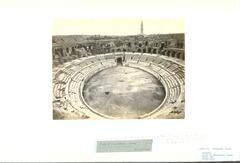848 UMMA Objects
848 UMMA Objects
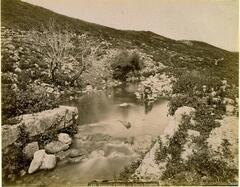
Felix Bonfils (French (culture or style))
Fontaine d'Elisée - Elisa's fountain
1867 – 1879
Gift of Mr. and Mrs. W. Howard Bond
1985/2.100
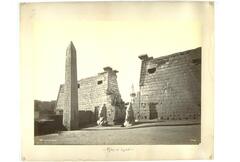
Pascal Sebah (Turkish (culture or style))
Louqsor. Le Pylône
1875 – 1885
Transfer from the Kelsey Museum of Archaeology
1980/1.203
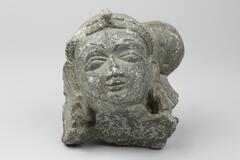
Indian (Indian (South Asian))
Head of a Woman
Gift of Professor Walter M. and Nesta R. Spink
1985/2.145
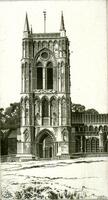
John Taylor Arms (American (North American))
Anglia Antiqua, West Walton
1937
Gift of Carl Fredric Clarke
1949/1.42
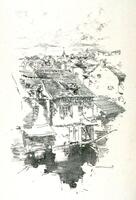
James Abbott McNeill Whistler (American (North American))
Vitré—The Canal
1893
Bequest of Margaret Watson Parker
1954/1.435
![This stone dagger has a handle that is divided into two parts, separated from each other by a thinner band. The upper tier is smaller in length than the lower tier, which flares outward as it approaches the end. The tip of blade is broken off. In profile, the blade thickens in the center.<br />
<br />
Carved from stone, this dagger with a two-tier handle is missing only its tip. The cross section of the blade is rhomboid, while that of the handle is shaped like a convex lens. The dagger is of the later two-tier-handled type (<em>idanbyeongsik</em>), meaning that it probably dates from the end of the early Bronze Age or the beginning of the middle Bronze Age. Max Loehr (1903- 1988) was a German art historian specializing in East Asian art who taught at the University of Michigan from 1951 to 1960 as a professor.<br />
[Korean Collection, University of Michigan Museum of Art (2017) p.32] This stone dagger has a handle that is divided into two parts, separated from each other by a thinner band. The upper tier is smaller in length than the lower tier, which flares outward as it approaches the end. The tip of blade is broken off. In profile, the blade thickens in the center.<br />
<br />
Carved from stone, this dagger with a two-tier handle is missing only its tip. The cross section of the blade is rhomboid, while that of the handle is shaped like a convex lens. The dagger is of the later two-tier-handled type (<em>idanbyeongsik</em>), meaning that it probably dates from the end of the early Bronze Age or the beginning of the middle Bronze Age. Max Loehr (1903- 1988) was a German art historian specializing in East Asian art who taught at the University of Michigan from 1951 to 1960 as a professor.<br />
[Korean Collection, University of Michigan Museum of Art (2017) p.32]](/media/W1siZiIsIjIwMjIvMDUvMjUvMjhpaWV3MzJmbV9kZWZhdWx0LmpwZyJdLFsicCIsInRodW1iIiwiMjQweDIwMCJdXQ?sha=d2502c4cf43f3c8e)
Korean (Korean (culture or style))
Polished Stone Dagger
900 BCE – 701 BCE
Museum purchase from the collection of Max Loehr
1960/2.117
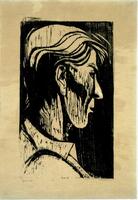
Leonard Baskin (American (North American))
Japanese Head
1950
Gift of Mr. and Mrs. Stephen A. Stone
1971/2.114
![Shiva sits with his consort on a double lotus pedestal. He has six arms, his right three are in varada mudra [a giving gesture], holds a rosary and an arrow. His left arms cup his consorts left breast and hold a lotus flower and a bow. He sits in royal ease, with one leg pendant. He wears bracelets, armlets, necklaces, earrings, and a sacred thread that stretches form his left shoulder down past his waist. On his head he wears an elaborate jatamukuta, a crown interlaced with his matted locks. Parvati sits upon his knee with one leg tucked under her and the other pendant. She is also adorned with jewelry, but wears a more modest diadem at the front of her head.<br /> Shiva sits with his consort on a double lotus pedestal. He has six arms, his right three are in varada mudra [a giving gesture], holds a rosary and an arrow. His left arms cup his consorts left breast and hold a lotus flower and a bow. He sits in royal ease, with one leg pendant. He wears bracelets, armlets, necklaces, earrings, and a sacred thread that stretches form his left shoulder down past his waist. On his head he wears an elaborate jatamukuta, a crown interlaced with his matted locks. Parvati sits upon his knee with one leg tucked under her and the other pendant. She is also adorned with jewelry, but wears a more modest diadem at the front of her head.<br />](/media/W1siZiIsIjIwMjIvMDUvMjUvMnF5ZHF1aXpyaV9kZWZhdWx0LmpwZyJdLFsicCIsInRodW1iIiwiMjQweDIwMCJdXQ?sha=5e9565cd110a2b87)
Indian (Indian (South Asian))
Uma-Maheshvara, a seated Shiva and Parvati (Uma)
12th century
Museum purchase for the James Marshall Plumer Memorial Collection
1964/2.85

Dame Barbara Hepworth (British (modern))
Sphere with Colour (Grey and White)
1965
Museum Purchase
1967/1.43

Ercole Ferrata
The Stoning of St. Emerenziana
17th century
Purchased from the Estate of Edward Sonnenschein
1970/2.84
Loading…
